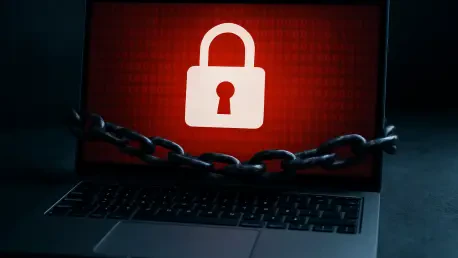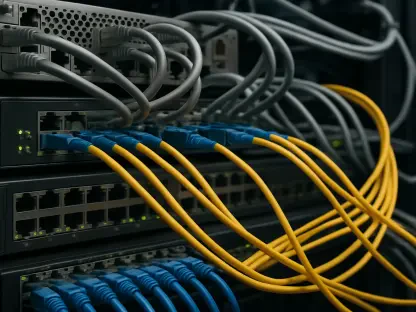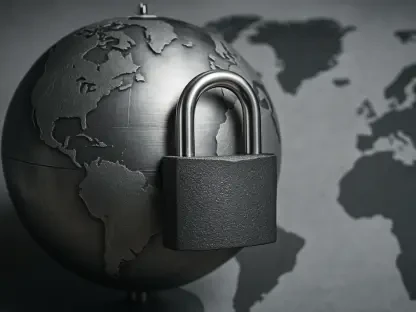In an era where cyber threats loom larger than ever, nations are taking unprecedented steps to safeguard their digital landscapes, and Ukraine has emerged as a key player in this arena with a groundbreaking legal move. Recently, the country has introduced a robust framework to protect its critical infrastructure and national interests by formalizing a list of prohibited software and equipment. This initiative marks a significant stride in bolstering cybersecurity, responding to the growing risks posed by malicious or sanctioned technologies. As digital warfare becomes an integral part of global conflicts, Ukraine’s decision to regulate the use of specific technologies underscores the urgent need for stringent measures to shield sensitive systems from potential breaches. This development not only aims to fortify national security but also sets a precedent for how countries might address the intersection of technology and geopolitics. With the list now under official management, businesses and individuals operating within Ukraine must navigate this new regulatory landscape with caution and diligence to avoid severe repercussions. The implications of this policy ripple beyond borders, prompting a closer look at how such bans could reshape the global tech ecosystem.
1. Establishing the Legal Framework for Cybersecurity
The foundation of Ukraine’s latest cybersecurity strategy rests on a newly adopted legal procedure designed to protect the nation’s vital infrastructure. On October 22, a resolution by the Cabinet of Ministers introduced “The Procedure for Forming and Maintaining an Open List of Software and Communication (Network) Equipment Prohibited for Use.” This regulation operationalizes key aspects of the Law “On the Basic Principles of Ensuring Cybersecurity of Ukraine,” providing a clear mechanism for identifying and banning software and equipment deemed risky or tied to sanctioned entities. Managed by the Administration of the State Service for Special Communications and Information Protection, known as Derzhspetszviazku, the list will be publicly accessible in electronic format. Both the Derzhspetszviazku official website and the Unified State Open Data portal will host this critical resource, ensuring transparency and ease of access for all stakeholders. This step reflects a proactive approach to tackling cyber vulnerabilities at a national level, prioritizing the security of essential systems.
Beyond the procedural rollout, this framework signifies a broader commitment to aligning Ukraine’s cybersecurity policies with international standards. By creating an open and regularly updated list, the government aims to provide clarity for businesses and tech providers operating within its borders. The emphasis on public availability underscores a dedication to accountability, allowing entities to stay informed about prohibited technologies in real time. Moreover, this initiative serves as a deterrent to potential cyber adversaries by explicitly outlining technologies that pose threats to national interests. As digital infrastructure becomes increasingly integral to governance and economic stability, such measures are vital for maintaining resilience against sophisticated attacks. The legal backbone of this ban list establishes a precedent for other nations grappling with similar challenges in the digital realm.
2. Defining the Criteria for Banned Technologies
Understanding what lands a piece of software or equipment on Ukraine’s prohibited list is crucial for compliance and risk management. The criteria for inclusion are precise, targeting technologies based on specific legal and security grounds. First, items owned or beneficially controlled by entities subject to Ukrainian sanctions under the Law “On Sanctions” are automatically eligible for the ban. Second, technologies under international sanctions recognized by Ukraine also qualify for inclusion. Finally, any software or equipment explicitly prohibited by a court decision falls within the scope of this list. Maintained primarily in Ukrainian, the list details the name of the software or equipment, the manufacturer, additional identifiers like version or serial numbers, and the reason and date of inclusion. Notably, certain information, such as the product or manufacturer name, is also provided in the language of the country of origin for clarity. Updates or removals must occur within five working days of a triggering event, ensuring the list remains current.
These criteria reflect a multi-layered approach to identifying threats, combining national policy with global cooperation. The inclusion of international sanctions highlights Ukraine’s alignment with broader geopolitical efforts to curb the spread of risky technologies. Meanwhile, court decisions add a judicial dimension, ensuring that bans are not solely administrative but can also stem from legal rulings on specific threats. This structured process minimizes ambiguity, providing a clear roadmap for why certain technologies are deemed unsafe. For businesses, this transparency is essential for navigating compliance, as it offers insight into the rationale behind each prohibition. Staying abreast of these criteria is not just a regulatory necessity but also a strategic imperative for maintaining operational integrity in a highly regulated digital environment.
3. Navigating the Consequences of Non-Compliance
The ramifications of using software or equipment listed as prohibited in Ukraine are far-reaching, impacting various facets of an entity’s operations. Violating the ban after the designated prohibition date constitutes a breach of Ukrainian law, exposing users to a spectrum of penalties. Legislatively, non-compliance with the Law “On Sanctions” can lead to fines, suspension of business activities, or even criminal liability in cases tied to national security threats. Court-ordered bans carry their own weight, with potential enforcement actions like asset seizures for those who ignore judicial rulings. Administratively, regulatory bodies such as Derzhspetszviazku may impose fines, revoke licenses, or restrict access to public procurement opportunities. These penalties underscore the seriousness with which the government views adherence to the ban list, signaling a zero-tolerance stance on cybersecurity risks.
Beyond legal and administrative consequences, the operational and reputational fallout can be equally damaging. Authorities may mandate an immediate halt to the use of banned technologies, disrupting business continuity, limiting data access, and causing functionality losses. Such disruptions can cripple day-to-day operations, especially for entities reliant on specific software systems. Reputationally, public exposure of non-compliance risks eroding trust among clients, partners, and regulators, potentially leading to long-term relational damage. Additionally, if the prohibited technology handles personal data or poses cybersecurity threats, users may face audits from data protection or cybersecurity authorities. These multifaceted implications highlight the critical need for vigilance and proactive measures to avoid the pitfalls of using banned tools in Ukraine’s tightly regulated tech landscape.
4. Strategies for Staying Compliant with the Ban List
For businesses and individuals operating in Ukraine, treating compliance with the prohibited software and equipment list as an ongoing obligation is paramount to avoiding severe repercussions. Several actionable strategies can help mitigate legal, administrative, operational, and reputational risks. Engaging legal advisors is a foundational step, allowing entities to assess their current compliance status, evaluate exposure to potential bans, and develop tailored risk mitigation plans. Simultaneously, establishing robust monitoring systems to regularly check updates on the Derzhspetszviazku website and the Unified State Open Data portal ensures that any additions to the list are promptly identified. These proactive measures lay the groundwork for staying ahead of regulatory changes, minimizing the likelihood of unintentional violations in a rapidly evolving cybersecurity environment.
Further safeguarding against non-compliance involves conducting thorough IT audits and preparing for transitions to alternative solutions. Regular assessments of all deployed software and network equipment can pinpoint technologies at risk of being added to the ban list, enabling preemptive action. Developing migration plans to switch to compliant alternatives is equally critical, ensuring that operations remain uninterrupted even if a ban is enacted. Additionally, having a discontinuation strategy ready to execute immediately upon a technology’s inclusion on the list can prevent operational hiccups and legal entanglements. These steps collectively form a comprehensive compliance framework, empowering entities to navigate Ukraine’s stringent cybersecurity regulations with confidence and maintain their standing in a highly regulated market.
5. Looking Ahead: Building a Resilient Digital Future
Reflecting on the implementation of Ukraine’s ban list, it is evident that the steps taken mark a pivotal moment in the nation’s cybersecurity journey. The establishment of a transparent and legally grounded list of prohibited software and equipment demonstrates a firm commitment to protecting critical infrastructure from digital threats. The criteria set for inclusion, coupled with the severe consequences of non-compliance, underscore the government’s resolve to enforce these regulations rigorously. Businesses and individuals must adapt swiftly to the evolving landscape, grappling with the operational and reputational challenges posed by potential violations. This initiative not only strengthens national security but also highlights the intricate balance between technological advancement and regulatory oversight.
Moving forward, the focus should shift to fostering resilience through sustained collaboration between government bodies, businesses, and technology providers. Encouraging the development of secure, compliant alternatives can reduce dependency on risky software and equipment. Additionally, investing in cybersecurity education and training programs will equip stakeholders with the knowledge to navigate future regulations effectively. International partnerships could also play a vital role, facilitating the exchange of best practices and threat intelligence to combat global cyber risks. By prioritizing innovation and proactive compliance, Ukraine can build a digital ecosystem that withstands emerging threats while supporting economic growth. These next steps offer a pathway to not only adhere to current policies but also anticipate and shape the future of cybersecurity on a global scale.









